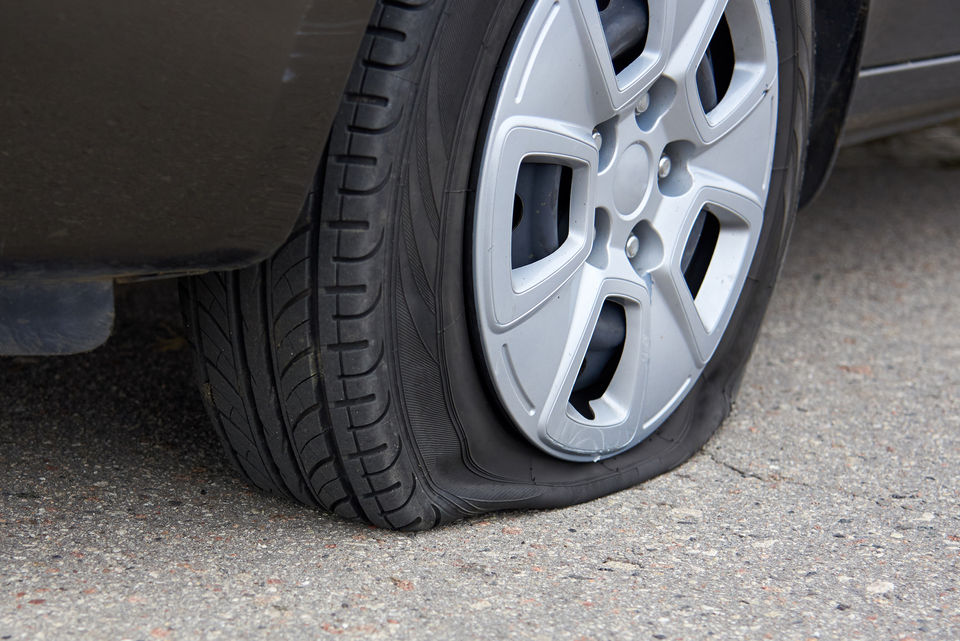
How Do Tyre Pressure Sensors Work? Our Guide To TPMS
Curious about how modern vehicles alert you about low tyre pressure?
Let’s explore the smart world of tyre pressure monitoring systems and how they ensure a safer and smoother ride.
What Are Tyre Pressure Sensors And TPMS?
Tyre pressure sensors are small electronic devices installed inside each tyre that continuously monitor the air pressure.
TPMS, on the other hand, is a system that receives data from these sensors and alerts the driver if any tyre’s pressure falls below the recommended level. The TPMS can be either direct or indirect, depending on the type of sensors used.
How Do Tyre Pressure Sensors And TPMS Work?
Direct TPMS
In a direct TPMS, each tyre has its own pressure sensor, usually attached to the valve system.
These sensors use radio frequencies to send real-time data on tyre pressure to the vehicle’s onboard computer. The computer then processes the information and displays the readings on the dashboard.
If the pressure in any tyre drops below the predetermined threshold, a warning light illuminates, notifying the driver to take action.
Indirect TPMS
Indirect TPMS relies on the vehicle’s Anti-lock Braking System (ABS) to monitor tyre pressure.
It works on the principle that an under-inflated tyre has a smaller diameter, causing it to rotate faster than properly inflated tyres. The ABS detects this difference in rotation speeds and alerts the driver through a warning light.
While indirect TPMS is less accurate than direct TPMS, it’s still a valuable safety feature.
What To Do When The TPMS Warning Light Activates
If you see the TPMS warning light illuminate on your dashboard, don’t ignore it. It’s a clear indication that one or more of your tyres might be underinflated, which can be dangerous.
Here’s what you should do:
- Check your tyres: Pull over to a safe location and inspect your tyres visually. Inspect for any signs of visible damage or punctures.
- Use a tyre pressure gauge: If your vehicle doesn’t display individual tyre pressure readings, use a manual tyre pressure gauge to check each tyre’s pressure.
- Inflate the tyres: If the pressure is low, add air to the affected tyre(s) until they reach the recommended pressure level indicated in your vehicle’s manual.
- Re-evaluate: After inflating the tyres, the TPMS warning light should turn off. If it persists, there might be an issue with the system, and you should have it checked by a professional.
Benefits Of Tyre Pressure Sensors And TPMS
Improved Safety
Properly inflated tyres ensure better traction, handling, and braking, especially in challenging road conditions.
TPMS plays a vital role in enhancing road safety by ensuring that tyres are always at their recommended pressure.
Early Warning System
Tyre pressure sensors and TPMS act as an early warning system for potential tyre-related issues.
By alerting drivers about low tyre pressure, they help prevent accidents caused by underinflated tyres, reducing the risk of blowouts and collisions.
Reduced Downtime
Underinflated tyres are more susceptible to damage and wear out faster.
With TPMS, drivers can address tyre issues promptly, reducing the likelihood of unexpected breakdowns and downtime.
Easier Maintenance
Maintaining the correct tyre pressure is crucial for optimal vehicle performance and fuel efficiency.
TPMS simplifies this task by constantly monitoring tyre pressure and informing drivers when adjustments are necessary.
Prevent Low-Pressure Related Problems
Tyre pressure sensors and TPMS help avoid potential problems arising from low tyre pressure, such as reduced fuel efficiency, uneven tyre wear, and compromised vehicle stability.
Conclusion
TPMS is an important safety feature with several benefits.
If you are planning to buy a new car, pick one equipped with this smart feature - it’s a small investment with big gains in the long run.

Louis
I'm Louis, an engineer passionate about helping Australians choose better tyres for their vehicles!
